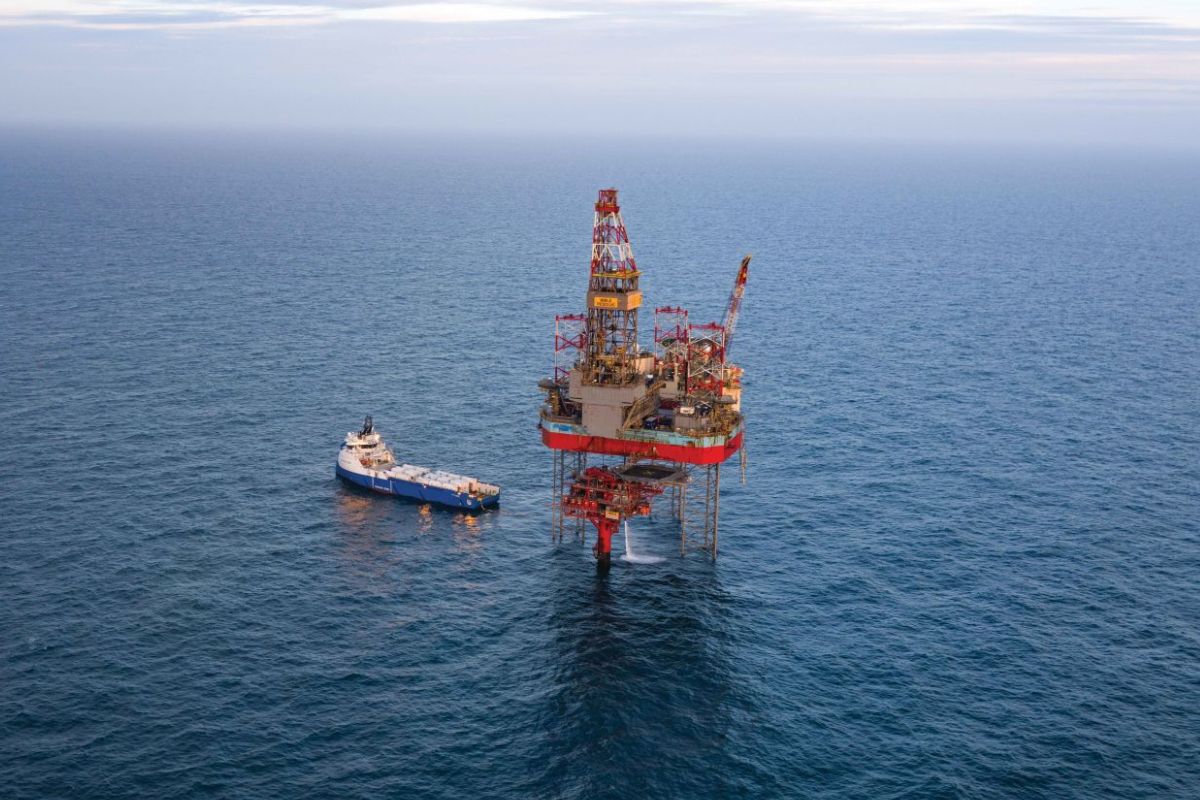Show table of content Hide table of content
The European solution to carbon emissions has taken a monumental step forward with the launch of a specialized vessel designed for CO2 sequestration beneath the North Sea. This revolutionary ship, constructed in the Netherlands and christened on May 14, 2025, represents a critical component in Europe’s strategy to combat climate change through large-scale carbon capture and storage (CCS) operations.
A maritime giant dedicated to carbon sequestration
Unlike conventional cargo vessels or passenger ships, this specialized vessel serves a unique purpose: transporting liquefied carbon dioxide captured from industrial facilities to geological storage sites. The ship, entirely designed and built in the Netherlands at the Royal Niestern Sander shipyard, was unveiled with considerable fanfare, including a live broadcast that underscored Europe’s commitment to addressing carbon emissions through innovative solutions.
The vessel functions as a critical link in a comprehensive carbon capture and storage chain, transporting liquefied CO2 at -50°C and compressed to 7 bars to the Nini West platform in Danish waters. From there, the carbon dioxide is injected into depleted hydrocarbon reservoirs more than 1,800 meters beneath the seabed. These geological formations have successfully contained oil for millions of years, offering promising prospects for long-term carbon storage.
Technical challenges abound in this pioneering venture. The transport of liquefied CO2 requires specialized equipment to maintain extreme cold temperatures and constant pressure. The ship features reinforced isothermal tanks, thermal regulation systems, and an extensive sensor network to prevent accidental releases during transit or while docked. Dutch shipbuilders leveraged decades of experience constructing LNG carriers and chemical tankers to overcome challenges like acid corrosion, circuit sealing, and cargo stability in rough seas.
Project Greensand: scaling up European carbon storage
The vessel operates within the framework of Project Greensand, an ambitious initiative led by INEOS Energy and Dutch shipowner Wagenborg Offshore. While the initial capacity of 400,000 tons of CO2 annually might seem modest compared to Europe’s total emissions, it represents just the first phase of a rapidly expanding program. Project developers aim to increase storage capacity to 8 million tons annually by 2030—equivalent to approximately 2% of France’s current annual emissions.
Financial backing for this groundbreaking project exceeds €140 million, combining private investments with European public funding. This substantial sum covers not only vessel construction and port infrastructure development but also the implementation of sophisticated monitoring systems to ensure long-term storage safety and effectiveness.
Denmark has emerged as Europe’s pioneer in carbon sequestration, offering several advantages that expedited the project’s implementation. The Nordic nation possesses well-mapped depleted oil reservoirs and maintains a progressive energy policy. Additionally, Danish public opinion has proven more receptive to carbon storage initiatives than in neighboring countries, streamlining administrative procedures and facilitating partnerships.
Science This strange red lake in Tanzania turns animals to ‘stone’.
The Danish government envisions transforming the country into Europe’s carbon capture and storage hub by repurposing existing petroleum infrastructure. This geological reconversion effectively reverses the traditional extraction process, injecting unwanted gases rather than extracting fossil fuels.
Expanding European carbon capture networks
Project Greensand represents just one component of Europe’s broader carbon capture strategy. The Northern Lights project, developed by TotalEnergies in partnership with Equinor and Shell, stands as another major European CCS initiative. Operating off Norway’s coast, Northern Lights stores carbon dioxide in a geological reservoir 2,600 meters beneath the seabed near Øygarden.
Since September 2024, Northern Lights has been storing up to 1.5 million tons of CO2 annually, with volumes sourced from various European industrial facilities, including Heidelberg Materials’ cement plant in Norway. A second phase, receiving investment approval in March 2025, will expand storage capacity beyond 5 million tons per year by 2028 through additional marine and onshore infrastructure.
TotalEnergies aims to develop storage capacity exceeding 10 million tons of CO2 by 2030, primarily in the North Sea region. This initiative offers decarbonization solutions for industrial sectors that struggle to reduce emissions through conventional means. Northern Lights marks a pivotal step toward establishing a European CCS market, contributing significantly to the EU’s climate objectives.
Similar projects are emerging across Europe, including Norway’s Longship, the UK’s Northern Endurance (also involving TotalEnergies), and France’s Aramis initiative. However, Greensand distinguishes itself as the first to connect land-based capture with maritime storage via a dedicated vessel.
Europe’s commitment to treating carbon dioxide as manageable waste—collected, packaged, transported, and permanently sequestered—demonstrates the continent’s leadership in developing practical solutions to global climate challenges. As these ambitious projects scale up operations over the coming years, they may provide a critical pathway for achieving carbon neutrality while maintaining industrial production.


